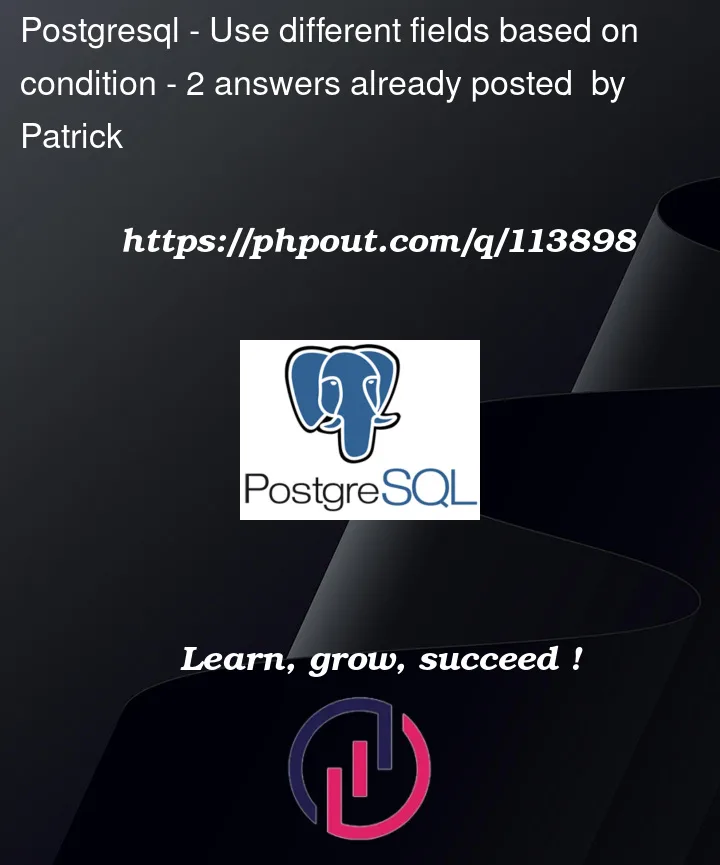I log the daily produced energy of my solar panels. Now I want to create a SQL statement to get the sum of produced energy for each month but separate columns for each year.
I came up with the following SQL statement:
SELECT LPAD(extract (month from inverterlogs_summary_daily.bucket)::text, 2, '0') as month,
sum(inverterlogs_summary_daily."EnergyProduced") as a2022
from inverterlogs_summary_daily
WHERE
inverterlogs_summary_daily.bucket >= '01.01.2022' and inverterlogs_summary_daily.bucket < '01.01.2023'
group by month
order by 1;
This results in only getting the values from 2022:
| month | a2022 |
|---|---|
| 1 | 100 |
| 2 | 358 |
| 3 | 495 |
How could I change the SQL statement to get new columns for each year? Is this even possible?
Result should look like this (with a new column for each year, wouldn’t mind if I had to update the SQL statement every year):
| month | a2022 | a2023 |
|---|---|---|
| 1 | 100 | 92 |
| 2 | 358 | 497 |
| 3 | 495 | 508 |




2
Answers
You can use conditional aggregation:
I assumed that
bucketis of a timestamp-like datatype, and adapted the date arithmetic accordingly.Side note: the expressions in the
filterclause can probably be optimized with the lengthier:You can add a condition to the
SUM